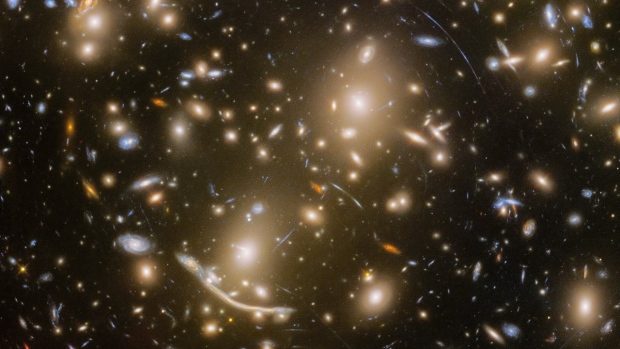
The telescope, run jointly by NASA and the European Space Agency, imaged a region six billion light-years away containing the galaxy cluster Abell 370.
Gravitational lensing, first proposed by physicist Albert Einstein in his general theory of relativity, warps space-time, bending light. In the case of this image, galaxies beyond the cluster spread out along multiple paths and appear in a few locations.
The longest streak in the image is the most dramatic display of lensing: there are four separate images of the single galaxy as the stretches and bends in an arc. In fact, all the arcs in this image are galaxies being bent through gravitational lensing.
The region was already imaged in 2009, but this new image contains far more galaxies at a better resolution.
Gravitational lensing allows astronomers to study galaxies that may be farther away, as their light is brought forward. In this photograph there is a galaxy that is more than 13 billion years old, forming shortly after the birth of our universe.
As for the image itself, it took a lot of time to obtain: 630 hours and more than 560 orbits of Earth.



Reader Comments